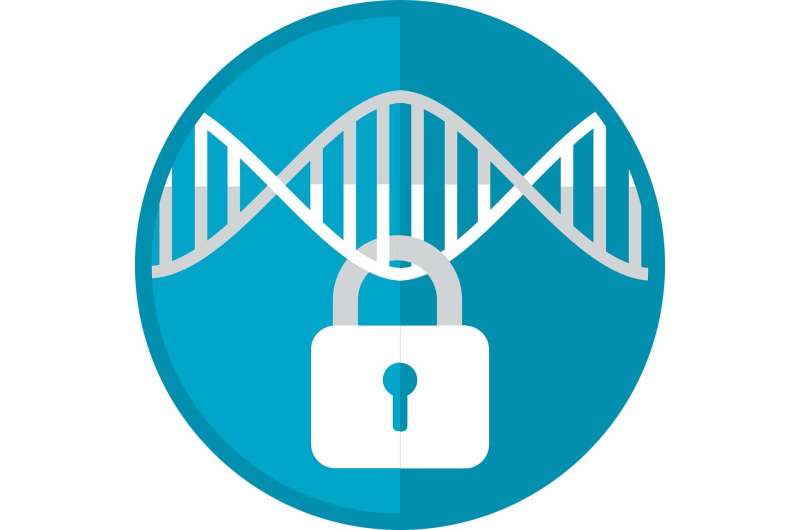
Many of the answers for effectively responding to a pathogen lie in its genome. Understanding the genetic code of a pathogen like Ebola or the virus that causes COVID-19 allows scientists to track its movement, predict future behavior, identify the source of the outbreak and, most importantly, develop effective vaccines and treatments. This technology was critical during the pandemic, and it will be even more so with future outbreaks.
That makes the continued development of genomic sequencing one of the most important takeaways from the pandemic, argue biologists Jason Ladner and Jason Sahl in an essay published in PLOS Biology.
Genomic sequencing had a huge impact in the global response to COVID-19, and the technology improved as more researchers put it to use. To better respond to the next pandemic, we need to build on that knowledge, they write, while also recognizing the gaps in our capabilities that remain.
“The COVID-19 pandemic in many ways represented the culmination of sequencing and analysis that had been building for years,” Sahl said. “We wanted to highlight that although interest in the pandemic has waned, other threats still exist, and maintaining our momentum while also building new infrastructure will be vital for improving public health responses to existing and emerging threats.”
Why the history matters to the present and future
Ladner and Sahl, associate professors in the Department of Biological Sciences at Northern Arizona University, and their colleagues in the Pathogen & Microbiome Institute, are on the front lines of applying and analyzing cutting-edge genomic technology in the study of pathogens, and have worked with various infectious agents, including Ebola, Zika, Yersinia pestis (which causes plague), anthrax and Burkholderia pseudomallei (which causes melioidosis).
In the essay, they focus on the history of pathogens and genomic sequencing to help readers understand that the patterns we see now aren’t new. In the 1960s, scientists thought they had infectious disease resolved with the development of vaccines, antibiotics, personal hygiene and sanitation norms and more.
“What we did not fully appreciate at the time, however, was the incredible diversity of human pathogens, their capacity for rapid evolution and the dynamic nature of interactions between pathogens and their hosts,” Ladner and Sahl write. “Combined, these factors have substantially complicated our attempts to mitigate the impacts of infectious disease.”
Sixty years later, pathogens remain complicated. The biologists provide a roadmap for various stakeholders in preparation for the next pandemic: highlighting deficits in research for scientists to address; pointing out the critical need for collaboration and investment for policymakers; and explaining the history of pathogen genomic sequencing to public health officials, media, philanthropists and others so they can understand the full potential of pathogen sequencing for public health.
“We wrote this essay to contribute to the broader discussion of how pathogen genome sequencing should be used in the future to improve public health and what types of investments and innovations we need to facilitate this,” Ladner said. “This is no longer a niche topic, but one with broad appeal for scientists in multiple different fields, officials setting health care policy and media who are working to understand recent advances and communicate them to the general public.”
Lessons learned from the COVID-19 pandemic
- We need better infrastructure. The biggest deficit is a lack of global infrastructure to support real-time sequencing and collaboration among countries and among different research institutions. Some of this was built during the pandemic, but scientists also identified deficits in sequencing capacity and data sharing, which means they’re working with an incomplete picture of what is happening on the ground. This will require sustained investments between stakeholders.
-
We need to expand the way we use pathogen genomes in our response to infectious disease. This is a science problem, but it’s also much bigger than that. “To realize the full public health potential of pathogen sequencing in the future, we need to harness the momentum generated by the COVID-19 pandemic while ensuring that the benefits of future investments apply broadly to the full spectrum of human infectious disease,” Ladner said.
-
We need to define objectives for the role of pathogen genomics in responding to public health threats. With COVID, scientists used genomes the best they could, but in most cases, they haven’t had clear objectives for how genomes should contribute to a public health response. Defining those objectives will help researchers plan for future outbreaks and evaluate the effectiveness of the response.
-
We have to keep the momentum going. Although COVID-19 remains a threat, interest in the pandemic has faded. However, antimicrobial resistance still represents a significant public health threat. The sequencing infrastructure built during the pandemic will need to be supported by sustained federal investments, or society will return to pre-pandemic capacity and will be unable to quickly respond to the next public health threat, Sahl said.
More information:
Towards a post-pandemic future for global pathogen genome sequencing, PLoS Biology (2023). DOI: 10.1371/journal.pbio.3002225 , journals.plos.org/plosbiology/ … journal.pbio.3002225
Journal information:
PLoS Biology
Source: Read Full Article
